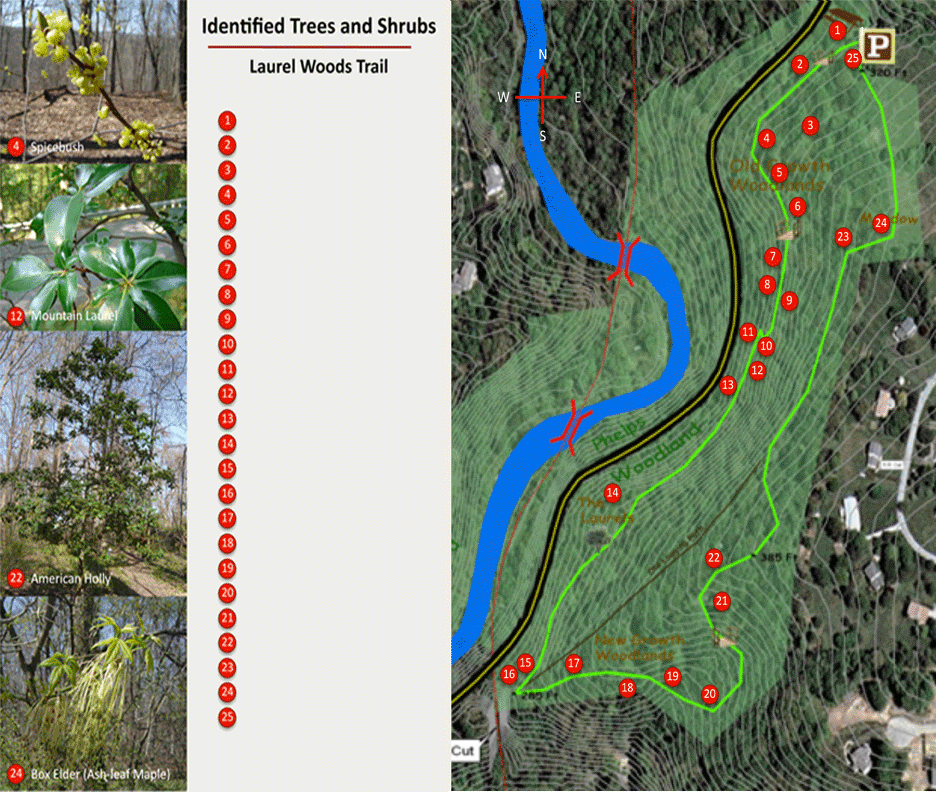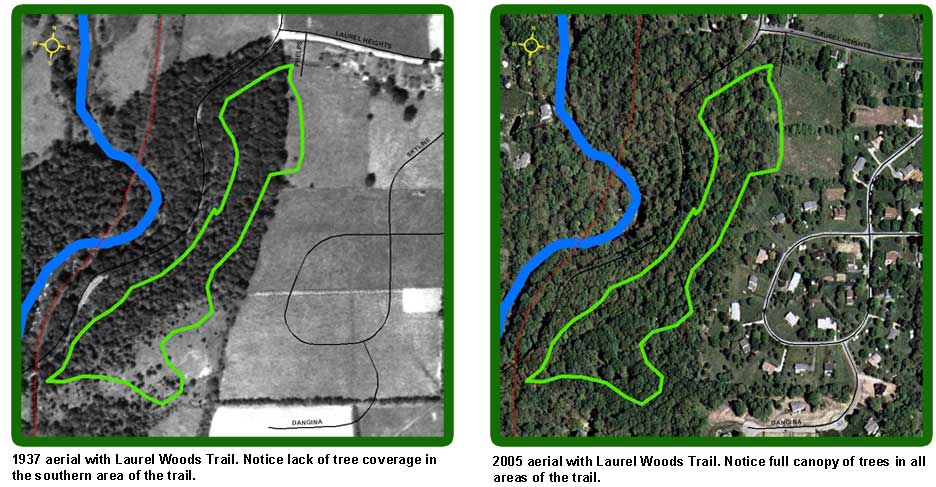Ecological Features
The Laurel Woods Trail traverses a unique section of mature woodland within the White Clay Creek canyon.
Hiking counterclockwise:
• Near the trail entrance common trees are American Beech, White Oak and Maples.
• Past the bridge along the crest of the ridge dominant tree species are Chestnut Oak, Red Oak, White Oak and Black Oak with the understory dotted with struggling Mountain Laurel.
• Beyond the railroad cut on the back side of the ridge the terrain and tree type shifts and Tulip Poplars dominate. This section also includes a patch of invasive alien Winged Burning-bush and a section of native grape vines.
• The old logging road is lined with stately mature trees including various oaks and maples.
• The trail finishes with a descent through the meadow by the parking area.
While walking the northern area notice the population of oak, hickory, maple and beech trees. In 1937 this area of the trail was populated with trees while the southern section was largely clear due to logging (see photos at the bottom of the page.) Consequently, the southern area is populated with fast growing species such as Poplar, Sassafras, Grapevine and invasives such as Winged Euonymus today
• Near the trail entrance common trees are American Beech, White Oak and Maples.
• Past the bridge along the crest of the ridge dominant tree species are Chestnut Oak, Red Oak, White Oak and Black Oak with the understory dotted with struggling Mountain Laurel.
• Beyond the railroad cut on the back side of the ridge the terrain and tree type shifts and Tulip Poplars dominate. This section also includes a patch of invasive alien Winged Burning-bush and a section of native grape vines.
• The old logging road is lined with stately mature trees including various oaks and maples.
• The trail finishes with a descent through the meadow by the parking area.
While walking the northern area notice the population of oak, hickory, maple and beech trees. In 1937 this area of the trail was populated with trees while the southern section was largely clear due to logging (see photos at the bottom of the page.) Consequently, the southern area is populated with fast growing species such as Poplar, Sassafras, Grapevine and invasives such as Winged Euonymus today
White Oak
American Beech
Mockernut Hickory
Spice Bush
Flowering Dogwood
Black Gum
Pignut Hickory
Sugar Maple
Red Oak
Chestnut Oak
Black Haw
Mountain Laurel
Black Oak
Scarlet Oak
Sassafras
Eastern Hemlock
Black Cherry
Ironwood
Tulip Poplar
Winged Euonymus (invasive)
Grapevine
American Holly
Red Maple
Box Elder (Ash-leaf Maple)
Blackjack Oak



